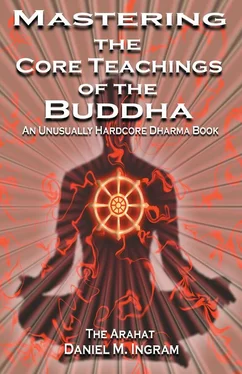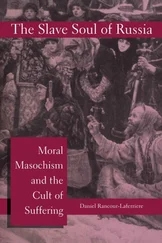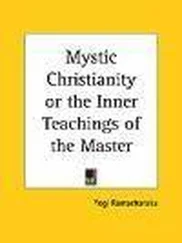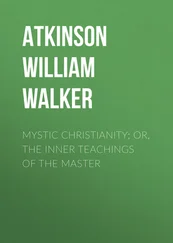Daniel Ingram - Mastering the Core Teachings of Buddha - An Unusually Hardcore Dharma Book
Здесь есть возможность читать онлайн «Daniel Ingram - Mastering the Core Teachings of Buddha - An Unusually Hardcore Dharma Book» весь текст электронной книги совершенно бесплатно (целиком полную версию без сокращений). В некоторых случаях можно слушать аудио, скачать через торрент в формате fb2 и присутствует краткое содержание. Год выпуска: 2009, ISBN: 2009, Издательство: Aeon Books, Жанр: Старинная литература, на русском языке. Описание произведения, (предисловие) а так же отзывы посетителей доступны на портале библиотеки ЛибКат.
- Название:Mastering the Core Teachings of Buddha - An Unusually Hardcore Dharma Book
- Автор:
- Издательство:Aeon Books
- Жанр:
- Год:2009
- ISBN:9781904658405
- Рейтинг книги:5 / 5. Голосов: 1
-
Избранное:Добавить в избранное
- Отзывы:
-
Ваша оценка:
- 100
- 1
- 2
- 3
- 4
- 5
Mastering the Core Teachings of Buddha - An Unusually Hardcore Dharma Book: краткое содержание, описание и аннотация
Предлагаем к чтению аннотацию, описание, краткое содержание или предисловие (зависит от того, что написал сам автор книги «Mastering the Core Teachings of Buddha - An Unusually Hardcore Dharma Book»). Если вы не нашли необходимую информацию о книге — напишите в комментариях, мы постараемся отыскать её.
Mastering the Core Teachings of Buddha - An Unusually Hardcore Dharma Book — читать онлайн бесплатно полную книгу (весь текст) целиком
Ниже представлен текст книги, разбитый по страницам. Система сохранения места последней прочитанной страницы, позволяет с удобством читать онлайн бесплатно книгу «Mastering the Core Teachings of Buddha - An Unusually Hardcore Dharma Book», без необходимости каждый раз заново искать на чём Вы остановились. Поставьте закладку, и сможете в любой момент перейти на страницу, на которой закончили чтение.
Интервал:
Закладка:
There can arise an odd phenomenon that has been referred to by one of my teachers as “Twelfth Path,” though this phrase is not in common usage. It is, however, a common phenomenon in those who have attained at least stream entry and is probably the most important concept in this book for those working on the higher paths, particularly beyond second path. Twelfth Path is making a joke about the fact that there are at most four stages of enlightenment in the Theravada map and five or ten in the Tibetan maps. However, it can easily seem that more than ten brand-new and full-blown cycles of insight have been completed and yet there is still much more to go. If one is going to get obsessed with the fractal model that I mentioned earlier, it is likely to happen around here. Unfortunately, the fractal model is even more useless now than it was earlier, and so I strongly recommend avoiding it like the plague if you think you are in a new progress cycle rather than a review cycle.
Things might proceed as follows. It seems certain that a cycle has been completed. Next, there seems to be a clear mastery stage that withstands all of the most rigorous tests, then more early progress of 256
Beyond First Path (“What Next?”)
insight stuff shows up, the cycle begins to go around again, perhaps with more backsliding, moving forward, falling back again, remastering the old territory, more progress and suffering shows up with its associated struggles and rationalizations, then there comes a sense of there being no other option but progress and acceptance, and finally the sense that the cycle has completed itself. Soon enough there is a clear sense of a mastery stage, and so on. In this way, it may seem that some large number of paths or bhumis have been attained, twelve in the joke, when in fact they have not. Or have they? Unfortunately, this is a tough question, and one that cannot easily be resolved.
One may think that one is now at a higher stage of realization that is clearly different from before, but the “magic numbers” 4 or 10 simply may not seem to apply to one’s journey. It can also happen that, with increased clarity and progressive deepening of one’s practice, distinct progress of insight patterns may seem to be repeating within each of the smaller units of the larger pattern of the progress of insight, very much in the way of fractals, as detailed earlier. Beware! Do not get sucked into identifying with these idealized stages as actually being “where you are”!
New progress cycles and their accompanying vagueness can be very confusing if we are fixated on models but are not aware that the in-between territory is nearly impossible to successfully map in real-time.
We may sometimes feel that we have just gone through the larger progress of insight cycle when we may have actually only gone through a small part of it. We may begin to think we see first, second, third and fourth vipassana jhana aspects of each of the four larger vipassana jhanas. We may even begin to see patterns similar to those of a full progress of insight within each of the stages of the larger progress of insight or even within parts of each stage. A similar observation can arise in concentration practice with the samatha jhanas, but this tends to not be nearly as problematic or dramatic.
I have come to the conclusion that fear, anxiety, confusion, indecision and even certainty about these issues are clear markers of what needs to be investigated, i.e. those things themselves. In this way, these aspects of suffering have become trusted friends, clear signposts and red flags, as well as aspects of the goal, which is the path in the end.
The more we realize that those very processes are it, those very 257
Beyond First Path (“What Next?”)
sensations are it, the closer reality is to understanding itself. The closer reality is to understanding itself, the less fundamental suffering there is.
I have also come to the conclusion that the best reason to take these detailed maps to this extreme is that eventually they become way too ridiculous and cumbersome. Thus, eventually they can be laughed at and yet make their few useful points also, while leaving us with no option but to be with reality, one aspect of which is the sensations that make up thoughts about maps. We can learn to laugh at ourselves and our deep-seated but futile desire to simplify fresh patterns of sensations and solidify them into a sense of an attainment that “we” have.
On the darker side, when we are unable to do this, unable to laugh at our deluded attempts to fix or freeze a sense of what some illusory
“we” has done or attained, the phenomena of Twelfth Path and the complexity of the territory between paths can cause considerable doubt, pain, frustration and cynicism, the flip side of which is grandiosity. The more afraid we are of not making progress, the worse these sorts of feelings can become. The more we compare our practice to the misunderstood sensations that make up the sense of “others,” the more needless suffering arises. These sensation patterns must be investigated clearly and seen as they really are, as always.
When this all ends is a subject of considerable controversy, though like an idiot I am going to take on the topic of Full Enlightenment shortly. Anyway, it should be noted that a long-term view is very helpful sometimes, particularly if it helps one just be with what is happening today. It will often not be clear which event was actually the new Arising and Passing Event or which event was really a new Path until one has the benefit of a few more months or years of practice. One may experience many strange events, state shifts, insights and profound openings, all of which can be very compelling for some period of time.
However, there tend to be just a few of these memories that, on careful reflection, stand out in the mind as being really significant and by which one can clearly mark permanent shifts in one’s fundamental relationship to the experiences of life and the world.
In the next chapter, I will lay out a number of models of awakening that involve various numbers of shifts in understanding. One may be tempted, as I foolishly have been, to count the landmark events in one’s 258
Beyond First Path (“What Next?”)
practice and try to correlate them with these models based purely on the number of them that seem to have occurred. This is a setup for trouble, so please learn from those who have leaned the hard way and do not try it, as tempting as counting paths can be. A vastly superior form of inquiry and investigation is to carefully examine anything that seems to involve a sense of a split, of a this and a that, particularly at the rate of one to ten times per second or even faster if you can pull it off. What sensations seem to be the watcher, and what sensations seem to be watched? Try to see the true nature of these sensations one by one as they occur.
It must be said that after three or four of what seem like complete insight cycles or paths it can take quite a while to get a clear sense of what subtle dualities remain. You might find yourself walking around for days to months thinking, “Dang, I’ve really got it now. I’m just seeing it no matter what happens. Cool! I might have cracked the thing!
Dude.”
Give things time and beware of assuming that you have attained to more than you have. It is a very common and embarrassing problem, but those who know this territory will understand. However, those who do not know this territory may not be so forgiving, so beware of claiming a specific level of realization, particularly final realization, however you define it, until you have carefully checked things out for a very long time. I would advise thinking along the lines of, “Well, my working hypothesis is that it seems that I have achieved whatever, but I will keep an open mind and be cautious in what I say.”
Читать дальшеИнтервал:
Закладка:
Похожие книги на «Mastering the Core Teachings of Buddha - An Unusually Hardcore Dharma Book»
Представляем Вашему вниманию похожие книги на «Mastering the Core Teachings of Buddha - An Unusually Hardcore Dharma Book» списком для выбора. Мы отобрали схожую по названию и смыслу литературу в надежде предоставить читателям больше вариантов отыскать новые, интересные, ещё непрочитанные произведения.
Обсуждение, отзывы о книге «Mastering the Core Teachings of Buddha - An Unusually Hardcore Dharma Book» и просто собственные мнения читателей. Оставьте ваши комментарии, напишите, что Вы думаете о произведении, его смысле или главных героях. Укажите что конкретно понравилось, а что нет, и почему Вы так считаете.












